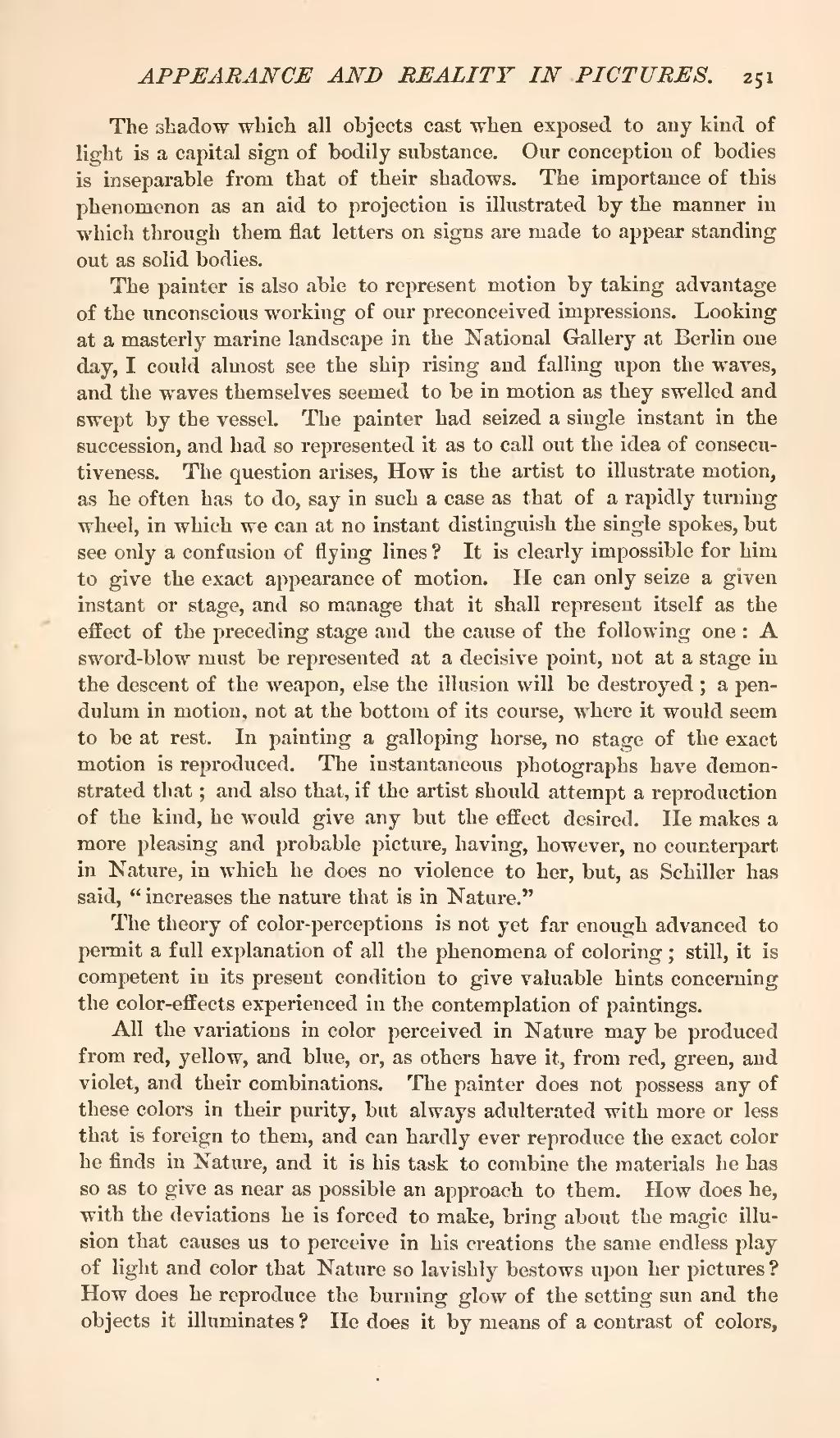The shadow which all objects cast when exposed to any kind of light is a capital sign of bodily substance. Our conception of bodies is inseparable from that of their shadows. The importance of this phenomenon as an aid to projection is illustrated by the manner in which through them flat letters on signs are made to appear standing out as solid bodies.
The painter is also able to represent motion by taking advantage of the unconscious working of our preconceived impressions. Looking at a masterly marine landscape in the National Gallery at Berlin one day, I could almost see the ship rising and falling upon the waves, and the waves themselves seemed to be in motion as they swelled and swept by the vessel. The painter had seized a single instant in the succession, and had so represented it as to call out the idea of consecutiveness. The question arises, How is the artist to illustrate motion, as he often has to do, say in such a case as that of a rapidly turning wheel, in which we can at no instant distinguish the single spokes, but see only a confusion of flying lines? It is clearly impossible for him to give the exact appearance of motion. He can only seize a given instant or stage, and so manage that it shall represent itself as the effect of the preceding stage and the cause of the following one: A sword-blow must be represented at a decisive point, not at a stage in the descent of the weapon, else the illusion will be destroyed; a pendulum in motion, not at the bottom of its course, where it would seem to be at rest. In painting a galloping horse, no stage of the exact motion is reproduced. The instantaneous photographs have demonstrated that; and also that, if the artist should attempt a reproduction of the kind, he would give any but the effect desired. He makes a more pleasing and probable picture, having, however, no counterpart in Nature, in which he does no violence to her, but, as Schiller has said, "increases the nature that is in Nature."
The theory of color-perceptions is not yet far enough advanced to permit a full explanation of all the phenomena of coloring; still, it is competent in its present condition to give valuable hints concerning the color-effects experienced in the contemplation of paintings.
All the variations in color perceived in Nature may be produced from red, yellow, and blue, or, as others have it, from red, green, and violet, and their combinations. The painter does not possess any of these colors in their purity, but always adulterated with more or less that is foreign to them, and can hardly ever reproduce the exact color he finds in Nature, and it is his task to combine the materials he has so as to give as near as possible an approach to them. How does he, with the deviations he is forced to make, bring about the magic illusion that causes us to perceive in his creations the same endless play of light and color that Nature so lavishly bestows upon her pictures? How does he reproduce the burning glow of the setting sun and the objects it illuminates? He does it by means of a contrast of colors,
